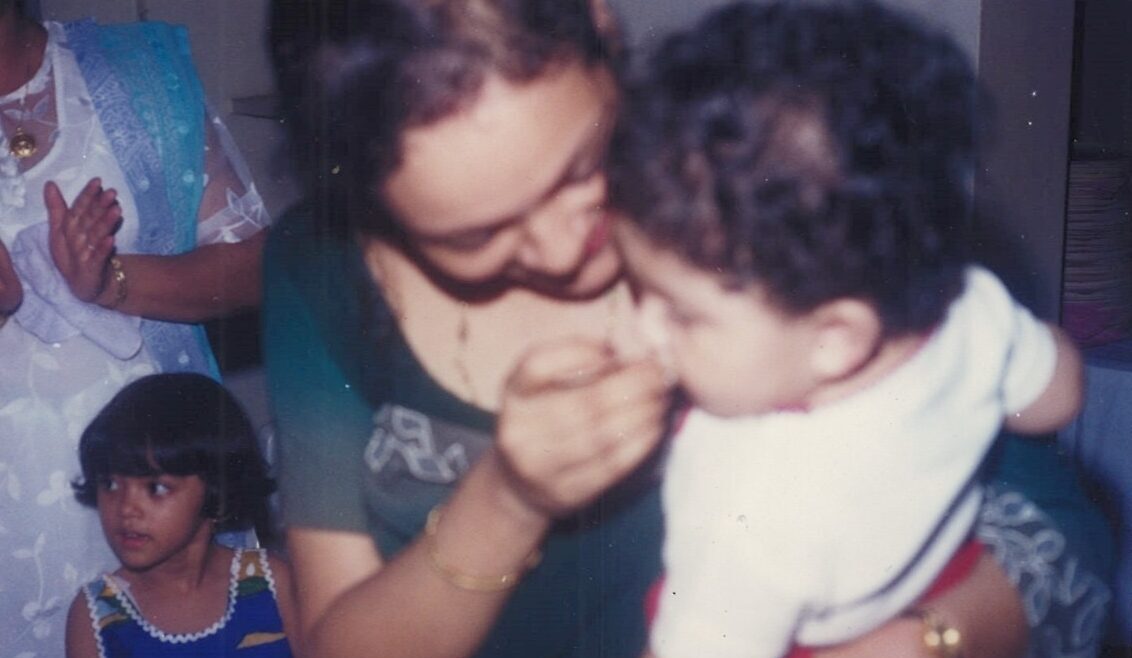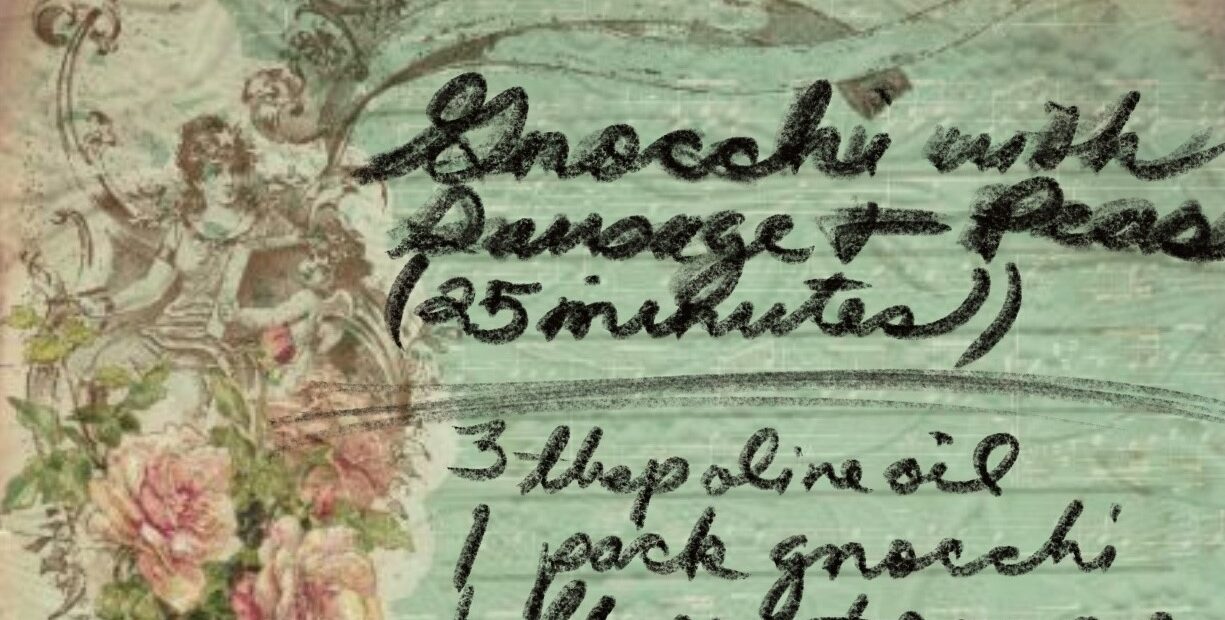Whether its daal or rajma chawal, the best way to enjoy Indian cuisine has always been with your hands. Sudrisha Goswami explores the heritage and history of this culinary tradition.
When my mother was a toddler, she lived with my grandfather, grandmother, and grandaunt in the hamlet of Digboi in Assam, India. My mother’s footsteps would boom through the entire house on the wooden floors of her childhood home as my grandmother ran after her with a plate of food in her hands.
“I was a fussy eater as a three-year-old,” my mother admits. My grandaunt heroically stepped in to my grandma’s rescue, who was tired of running after my mum to feed her. She had her own set of tricks up her sleeves. “She [my grandaunt] would divide the portion of rice and daal [lentil curry] into little balls and tell me that each ball had chicken or mutton stuffed inside before bringing them to my mouth with her hands,” she recalls. The bait was enough for my mother to open her mouth wide each time to chomp up on her food, only there was no meat inside.
“I used the same trick on you when you were younger, too,” my mom says. “Only, you did not need it. You ate everything under the sun.”
Twenty years later there is little that rings home the way digging my fingers into a plate of my mother’s daali aru bhaat [lentil curry and rice] does. Something about the warmth of my food transferring onto my fingers, scooping the perfect mouthful, and customising each bite with just the right mix of curry and rice enhances the taste.
Back in my school days, most of my afternoons were spent with my neighbours playing badminton in the scorching summers of Assam, working up an appetite. As both my parents worked, my neighbours’ households became my second homes. Between light-hearted conversations at the dining table, one of my neighbours would teach me how to skillfully scoop food with my hands without making a mess.
“North Indians will say that only the first two segments of your digits should be used, whereas in southern and eastern India, there is no problem with eating with your entire palm and all your fingers”
Dr Kurush F Dala
The tradition of eating with hands seeps into the relationship Indians have with people as much as they have with food. Modita Jain, who comes from the Indian state of Rajasthan and is currently a student at Bayes Business School, recalls: “My grandmother would always wait for me to arrive back from school when I was a child. After a tiring day, she would feed me with her hands. I think that is where I picked up the habit of eating with my hands.”
From weddings, where you are sure to spot distressed parents running after their children to feed them, to gurudwaras [place of worship for the Sikh community] where volunteers serve water directly into cupped palms, eating with hands connects us to the essence of our cultural traditions, fostering a sense of togetherness and respect for the food we receive.
The sentiments attached to the tradition are also embedded across languages in India. Freelance food journalist Priyamvada Kowshik says: “Eating with hands equates to an expression of love across our languages. The Hindi phrase ‘maa ke haath ka banaya hua’ depicts the love that a mother puts into the food she cooks for her child, for instance.” The same phrase is replicated across various other Indian languages: Bengali, “maayer hater khaba”, and the Hindi phrase “Ungliyan chakhte reh gaye”, which means “licked your fingers clean”.
Traversing across the vast country of India where languages, cultures, and cuisines change every 30 miles, there is a certain unity in the experience of eating with hands. Simultaneously, the nuances of the practice differ as we move along the country, socio-economically, and geographically.
Dr Kurush F Dala, culinary anthropologist, historian, and archaeologist, explains: “North Indians will say that only the first two segments of your digits should be used, whereas in southern and eastern India, there is no problem with eating with your entire palm and all your fingers. In many parts of southern India, you will see people eat absolutely thin curries directly off of banana leaves and patravalis [leaf plate].”
Leaves have doubled as plates for Indians since ancient times and are still used today. Dr Dalal says: “When eating in large groups, patravalis, which are dried leaves knitted together to make a plate, are often used, accompanied by a bowl made of saal leaves.” The use of banana leaves, lotus leaves, and teak leaves as plates are also common in India.

Across temples in the country, prashad [a religious offering] is often served on leaves and is eaten with hands. A few years back, my uncle chanced upon a visit to the Jagannath Temple in Puri, a city in the eastern state of Odisha. The temple is revered as one of the most sacred temples among Hindus, but is visited by people from across the world to experience the belief system.
My uncle recalls sitting next to a Canadian family during the prashad [holy meal] distribution in Jagannath Temple. “The family asked me where the cutlery to eat the prashad was and were shocked when I informed them that the food is supposed to be eaten with hands,” he says. The family did not know how to eat with their hands and were struggling as the food kept slipping from their fingers. “I remember teaching them how to scoop the food and once they got a hang of the process, they enjoyed it so much that they were licking their palms and fingers clean.”
The use of palms when eating with hands is another layer of distinction in how different people practice the tradition owing to India’s caste system. “The difference of whether your palm should come into contact with your food or not is also an upper caste thing among Indians,” Dr Dalal says. “It is among the hyper elite upper castes of north India that it matters. It does not matter as much, even among the upper castes of southern and eastern India.”
While the culture of eating with hands has sustained its place in a few traditions across Africa, Middle East, and South Asia, including India, Dr Dalal highlights that all of the human race began by eating with hands.
Ancient Ayurvedic teachings dating back to 2 BC mention the practice of eating with hands, associating each finger with one of the five elements of nature. This system of natural medicine says eating with hands promotes mindfulness, strengthens the connection between the individual and the food, and aids in digestion by harmonising the five elements during meals.
Some of the most ancient tools resembling spoons were crafted from tusks and bones of animals in the Palaeolithic age across Europe, Asia, and Africa. Dr Dalal says: “Most eating influences became fashionable during the Roman era where tines [forks] and spoons were used. Even in most of Europe, it was a belt knife at most that was used to cut up meat and everybody ate on trenchers [flat round slabs of bread used as a plate] in the mediaeval era.”
Kowshik, the food journalist, gives social media credit for sparking enthusiasm among youngsters embracing their culture. “There are so many things that encapsulate being Indian,” she says. The hashtag #desifood has more than 1.9m posts on Instagram while #indianwear has garnered more than 15.1m posts.
“It is becoming trendy on social media to be Indian,” she says. “Even those who have not done the inner work of culturally understanding what it means to be an Indian are being exposed to the nuances of Indian-ness.”
Kowshik adds: “Young Indians today are embracing their Indian-ness. If they have to roll up their sleeves and dip their fingers in a plate of rajma chawal [red kidney beans curry and rice], they put their spoons aside and say, ‘Mein haath se khaa lunga,’ [I will eat it with my hands].”


